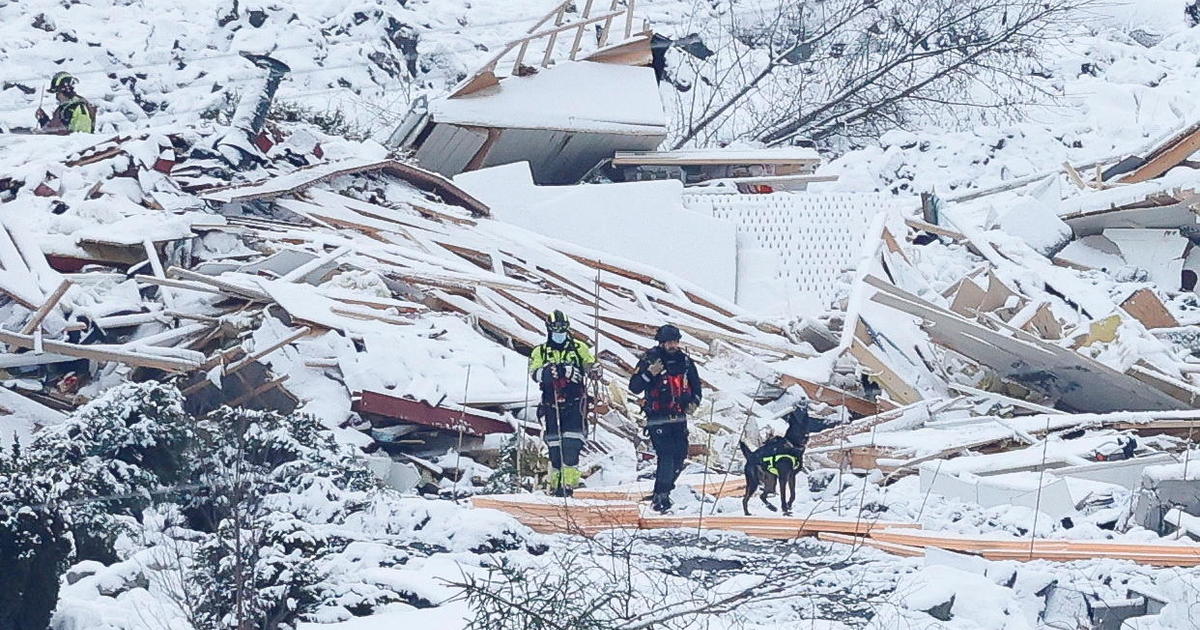
Rescue teams searching homes in a Norwegian village for survivors four days after a landslide found no signs of life amid the destroyed buildings and debris on Saturday. Three bodies have been recovered, but searchers are still looking for seven more missing people.
The landslide in the village of Ask is the worst in modern Norwegian history and has shocked citizens in the Scandinavian nation.
Search teams patrolled dogs as helicopters and drones with heat-detecting cameras flew over the devastated hill in Ask, a village of 5,000 people 15 miles northeast of Oslo, amid harsh winter conditions.
Norwegian police promised not to reduce the search, although a rescue team from neighboring Sweden has already returned home.
Local police chief Ida Melbo Oeystese said it may still be possible to find survivors in air pockets in the destroyed buildings.
“Medically, you can survive for several days if you have air,” she told reporters at a news conference.
NTB / Erik Schroeder via REUTERS
A second and third bodies had been found at the end of Saturday after the first was discovered on Friday. So far only a Dalmatian dog has been rescued alive from the ruins.
King Harald V, Queen Sonja and Crown Prince Haakon plan to visit the disaster area on Sunday to pay their respects to the victims and to meet residents and rescue workers. The 83-year-old monarch said in his New Year’s speech that the royal family was deeply affected by the tragedy.
Norwegian police have published the names and years of birth of the 10 people who were initially reported missing, including a 2-year-old child. Officials have not yet identified the three recovered bodies.
The landslide early Wednesday cut a road through Ask, leaving a deep, crater-like ravine. Photos and videos showed buildings hanging on the edge of the ravine, which became 700 meters long and 300 meters wide. At least nine buildings with more than 30 apartments were destroyed.
The rescue operation is hampered by the limited number of daylight hours in Norway at this time of year and fears of further erosion. The ground at the site is fragile and cannot support the weight of rescue equipment, including a heavy vehicle from the Norwegian army.
More than 1,000 people have been evacuated, and officials said up to 1,500 people could be relocated from the area for fear of further landslides.
The exact cause of the accident is not yet known, but the municipality of Gjerdrum, where Ask is located, is known for having a lot of fast clay, a material that can change from solid to liquid form. Experts said the clay substance coupled with excessive rainfall and the humid weather typical of Norway at this time of year may have contributed to the landslide.
Norwegian authorities warned people in 2005 not to build residential buildings in the area, but houses were eventually built later in the decade.
Norwegian Water Resources and Energy Directorate spokeswoman Toril Hofshagen called the landslide unique in its destruction.
“There has not been a rapid landslide of this magnitude in Norway since 1893,” Hofshagen told the media on Saturday.
